Feminism has developed in waves that have now been characterized. Below is a list of the some of the great female writers of each wave, and their contributions. Also, check out the Counter-Feminist Movements.
0. Protofeminism
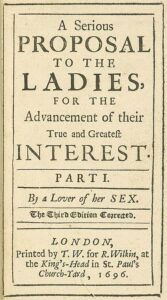
The proto-feminist movement emerged in the late 18th and 19th centuries and laid the groundwork for later feminist thought and activism. Proto-feminist writers and thinkers, such as Mary Wollstonecraft and Judith Drake, challenged traditional gender roles and advocated for women’s rights, particularly in areas such as education and marital rights. Their works set the stage for the organized feminist movements that followed. There are many more than I have listed here. 1
0.1 Mary Astell (1666-1731)
Often considered one of the first English feminists, Mary Astell is best known for her works “A Serious Proposal to the Ladies” (1694) and “Some Reflections upon Marriage” (1700). In these works, she argued for the education of women and criticized the institution of marriage, which she saw as oppressive to women.
0.2 Judith Drake (c. 1670-1723)
Judith Drake’s work, “An Essay in Defence of the Female Sex” (1696), is an important early feminist text. She challenged the prevailing notions of women’s inferiority and argued for the intellectual capabilities of women, advocating for their education and participation in intellectual life.
0.3 Lady Mary Wortley Montagu (1689-1762)
A prominent writer and socialite, Lady Mary Wortley Montagu is known for her letters and essays, including her “Letters from Turkey.” She is noted for her advocacy of smallpox inoculation, which she observed in Turkey, and for her writings on women’s experiences and rights.
0.4 Mary Wollstonecraft (1759-1797)
Although her most famous work, “A Vindication of the Rights of Woman” (1792), was published slightly after the mid-1700s, Wollstonecraft’s contributions to feminist thought were rooted in the intellectual currents of the Enlightenment. She argued for the education and rationality of women, emphasizing their potential to contribute equally to society.
0.5 Eliza Haywood (1693-1756)
Eliza Haywood was a prolific writer of novels, plays, and essays. Her work often explored themes of female agency and autonomy. In her novel “Fantomina” (1725), she examined the constraints placed on women by society and the ways they navigate these limitations.
0.6 Catharine Macaulay (1731-1791)
A historian and political writer, Catharine Macaulay is best known for her “History of England from the Accession of James I to that of the Brunswick Line” (1763-83). She was a strong advocate for republicanism and women’s rights, and her political writings included arguments for the equality of women.
1.0 First Wave Feminism (Late 19th and Early 20th Centuries)
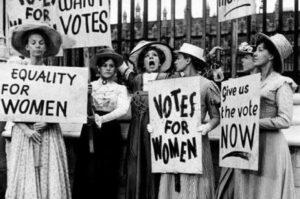 First Wave Feminism focused primarily on legal and political rights, particularly suffrage. It emerged in the late 19th and early 20th centuries and was characterized by campaigns for women’s right to vote, own property, and access education. Key issues included women’s suffrage, reproductive rights, and labor rights. The movement culminated in the ratification of the 19th Amendment in the United States and the enfranchisement of women in several other countries.
First Wave Feminism focused primarily on legal and political rights, particularly suffrage. It emerged in the late 19th and early 20th centuries and was characterized by campaigns for women’s right to vote, own property, and access education. Key issues included women’s suffrage, reproductive rights, and labor rights. The movement culminated in the ratification of the 19th Amendment in the United States and the enfranchisement of women in several other countries.
1.1 Mary Wollstonecraft (1759-1797) – “A Vindication of the Rights of Woman” (1792)
Advocated for women’s education and equality, laying the groundwork for feminist thought by arguing that women are not naturally inferior to men but appear so due to lack of education.
1.2 Sojourner Truth (1797-1883) – “Ain’t I a Woman?” (1851)
An African American abolitionist and women’s rights activist. Her speech “Ain’t I a Woman?” challenged prevailing notions of racial and gender inferiority and inequality.
1.3 Elizabeth Cady Stanton (1815-1902) – “Declaration of Sentiments” (1848)
Co-organized the Seneca Falls Convention and co-authored the “Declaration of Sentiments,” which demanded equal rights for women, including the right to vote.
1.4 Susan B. Anthony (1820-1906) – “The Revolution” (1868-1872, co-editor)
An advocate for women’s suffrage, co-founded the National Woman Suffrage Association, and campaigned tirelessly for the right to vote.
2.0 Second Wave Feminism (1960s-1980s)
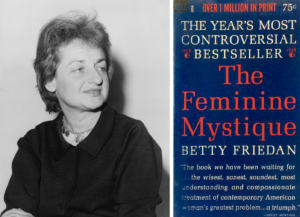 Second Wave Feminism emerged in the 1960s and focused on a wide range of issues beyond suffrage, including reproductive rights, workplace equality, and sexual liberation. It was characterized by grassroots activism, consciousness-raising groups, and the development of feminist theory. Key concerns included reproductive rights, the wage gap, domestic violence, and gender discrimination in the workplace. The movement also emphasized the personal as political, encouraging women to challenge societal norms and expectations in their everyday lives.
Second Wave Feminism emerged in the 1960s and focused on a wide range of issues beyond suffrage, including reproductive rights, workplace equality, and sexual liberation. It was characterized by grassroots activism, consciousness-raising groups, and the development of feminist theory. Key concerns included reproductive rights, the wage gap, domestic violence, and gender discrimination in the workplace. The movement also emphasized the personal as political, encouraging women to challenge societal norms and expectations in their everyday lives.
2.1 Simone de Beauvoir (1908-1986) – “The Second Sex” (1949)
Explored the social construction of womanhood and argued that women had historically been treated as “the Other.” Her work was foundational for second-wave feminist theory.
2.2 Betty Friedan (1921-2006) – “The Feminine Mystique” (1963)
Critiqued the idealized image of domestic femininity and highlighted the dissatisfaction of many housewives. Co-founded the National Organization for Women (NOW).
2.3 Gloria Steinem (1934-) – “Outrageous Acts and Everyday Rebellions” (1983)
A leading figure in the feminist movement, co-founded Ms. Magazine, and was a key spokesperson and writer advocating for women’s rights and social reform.
2.4 Angela Davis (1944-) – “Women, Race, & Class” (1981)
Explored the intersections of race, gender, and class. Her work emphasized the importance of addressing these intersecting oppressions in feminist theory and practice.
3.0 Third Wave Feminism (1990s-Present)
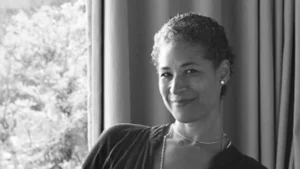
Third Wave Feminism emerged in the 1990s and sought to address the critiques and shortcomings of second-wave feminism. It emphasized intersectionality, recognizing the diverse experiences and identities of women based on factors such as race, class, sexuality, and disability. The movement focused on issues such as reproductive justice, body positivity, LGBTQ+ rights, and globalization. Third-wave feminists also embraced new forms of activism, including digital organizing and online feminism.
3.1 Bell Hooks (1952-2021) – “Feminist Theory: From Margin to Center” (1984)
Critiqued mainstream feminism for its focus on the experiences of white, middle-class women. Advocated for an inclusive feminism that considers race, class, and gender.
3.2 Rebecca Walker (1969-) – “To Be Real: Telling the Truth and Changing the Face of Feminism” (1995)
Coined the term “third wave” feminism. Her work emphasized individuality and diversity within the feminist movement, focusing on personal narratives and experiences. Meet the woman who coined the term ‘third wave feminism’ (smh.com)
3.3 Judith Butler (1956-) – “Gender Trouble: Feminism and the Subversion of Identity” (1990)
Challenged traditional notions of gender and identity, arguing that gender is performative. Her work has been influential in queer theory and feminist thought.
3.4 Roxane Gay (1974-) – “Bad Feminist” (2014)
Critiqued contemporary feminism while embracing its core principles. Her essays cover a wide range of issues including race, gender, and popular culture, advocating for an inclusive and intersectional feminism.
4.0 Fourth Wave Feminists (2012-Present)
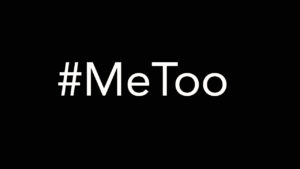 Fourth Wave Feminism emerged in the early 2010s and is characterized by its focus on digital activism, intersectionality, and issues such as sexual harassment, rape culture, and online misogyny. This wave leverages social media and digital platforms to raise awareness, organize campaigns, and amplify marginalized voices. It places a strong emphasis on inclusivity, recognizing and addressing the intersecting oppressions faced by women based on race, class, gender identity, and other factors.
Fourth Wave Feminism emerged in the early 2010s and is characterized by its focus on digital activism, intersectionality, and issues such as sexual harassment, rape culture, and online misogyny. This wave leverages social media and digital platforms to raise awareness, organize campaigns, and amplify marginalized voices. It places a strong emphasis on inclusivity, recognizing and addressing the intersecting oppressions faced by women based on race, class, gender identity, and other factors.
4.1 Chimamanda Ngozi Adichie (1977-)- “We Should All Be Feminists” (2014)
A Nigerian author whose TED Talk and subsequent essay, “We Should All Be Feminists,” became a widely recognized manifesto for modern feminism. Adichie emphasizes the importance of gender equality and critiques societal norms that perpetuate discrimination.
4.2 Jessica Valenti (1978-) – “Full Frontal Feminism” (2007)
A prominent feminist writer and founder of the blog Feministing. Valenti has written extensively on issues like reproductive rights, sexual health, and gender equality, using online platforms to engage a broad audience.
4.3 Roxane Gay (1974-) – “Bad Feminist” (2014)
An influential essayist and cultural critic whose work addresses the complexities and contradictions of modern feminism. Gay’s writing covers a range of topics including race, body image, and popular culture, advocating for a more inclusive and intersectional feminism.
4.4 Emma Watson (1990-) – HeForShe (2014)
An actress and activist who launched the HeForShe campaign as a UN Women Goodwill Ambassador. The campaign encourages men to advocate for gender equality and has gained significant global attention.
4.5 Tarana Burke (1973-) – Me Too Movement (2006)
An activist who founded the Me Too movement to support survivors of sexual violence, particularly women of color. The movement gained international prominence in 2017 and has been pivotal in addressing and challenging sexual harassment and assault.
4.6 Laverne Cox (1972-) – Advocacy for Transgender Rights
An actress and LGBTQ+ advocate known for her role in “Orange Is the New Black.” Cox uses her platform to raise awareness about transgender issues and the intersectionality of gender, race, and sexuality.
4.7 Malala Yousafzai (1997-) – “I Am Malala” (2013)
A Pakistani activist for female education and the youngest-ever Nobel Prize laureate. Her advocacy for girls’ education in the face of Taliban oppression has made her a global symbol of the fight for gender equality and education rights.
CONCLUSION
Feminism has certainly developed beyond its early days of seeking equal rights for females. While the work of countering the perversion and power plays of corrupt men and views in society, feminism has enlarged, some might say has been taken over, to include the entire gender identity movement. However, with the attempted inclusion of the transgender movement, a split has formed between traditional feminism and the incursion of transgenderism into what was formerly the territory of biological females.
Some critics argue that when feminism largely accomplished its primary goals, in the third wave, it was taken over by lesbians who had an anti-male animus which they brought to feminism (though this was probably present in nascent form in previous movements). These so-called feminazis brought regular and more virulent feminists into the LGB movement beyond the original emphases. And as mentioned above, the T (transgender) and other more fringe gender non-conformities attached themselves. Now even the furries may be seeking recognition as well.
In addition, what is missing from my history above are the many counter-feminist movements which tried to balance the over-reaches and vitriol of some of the feminist movements. They tried to incorporate traditional roles with the new rights being sought, affirming the goodness, rather than the slavery of wifery and motherhood. I’ll discuss them next time.
- Badass Proto-Feminists In History To Know (bustle.com)[↩]
